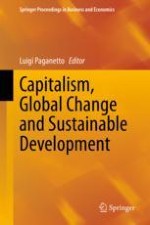2020 | OriginalPaper | Chapter
Individual Behavior and Collective Action: The Path to Iceland’s Financial Collapse
Authors : Thorvaldur Gylfason, Gylfi Zoega
Published in: Capitalism, Global Change and Sustainable Development
Publisher: Springer International Publishing
Activate our intelligent search to find suitable subject content or patents.
Select sections of text to find matching patents with Artificial Intelligence. powered by
Select sections of text to find additional relevant content using AI-assisted search. powered by
